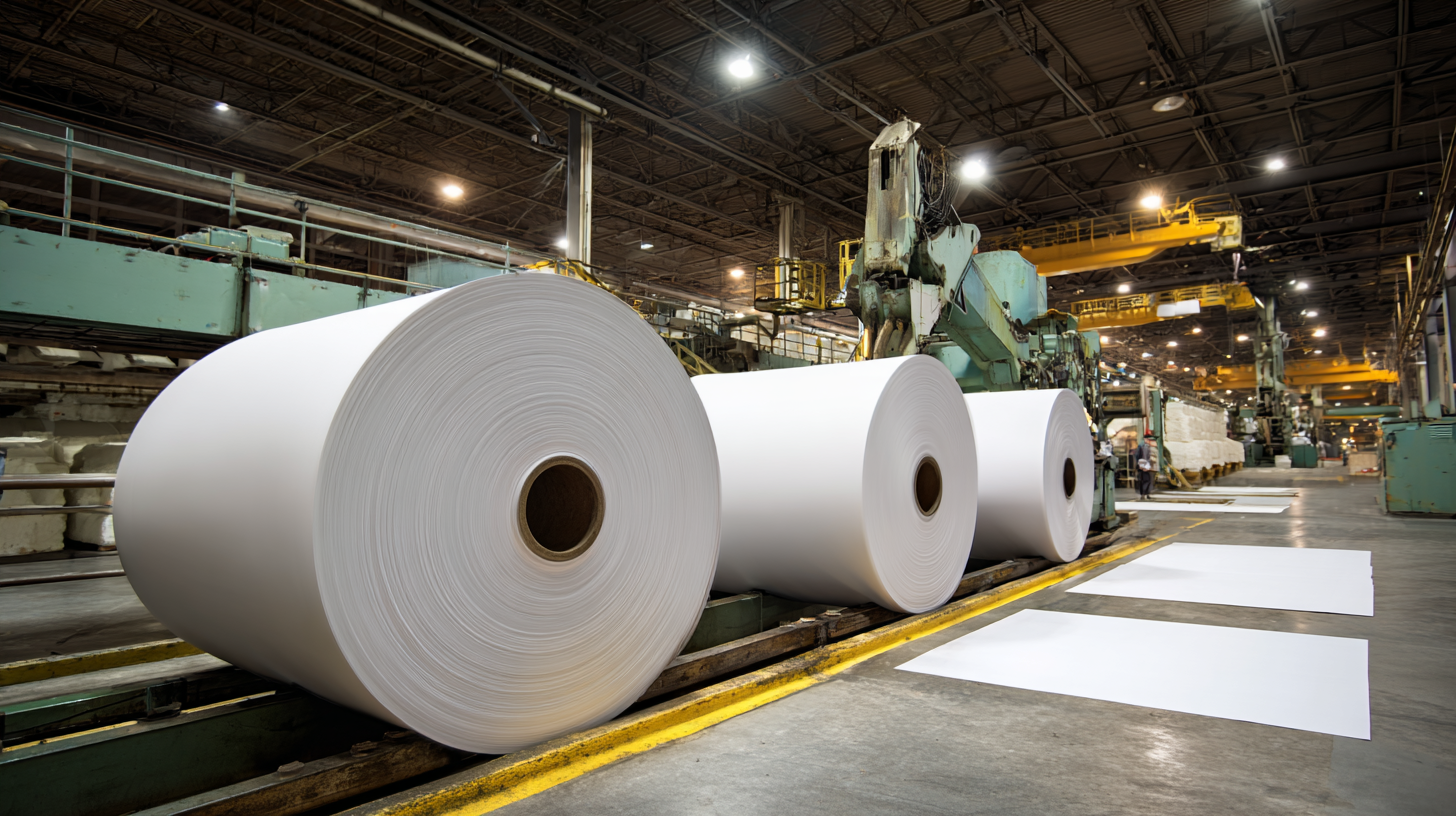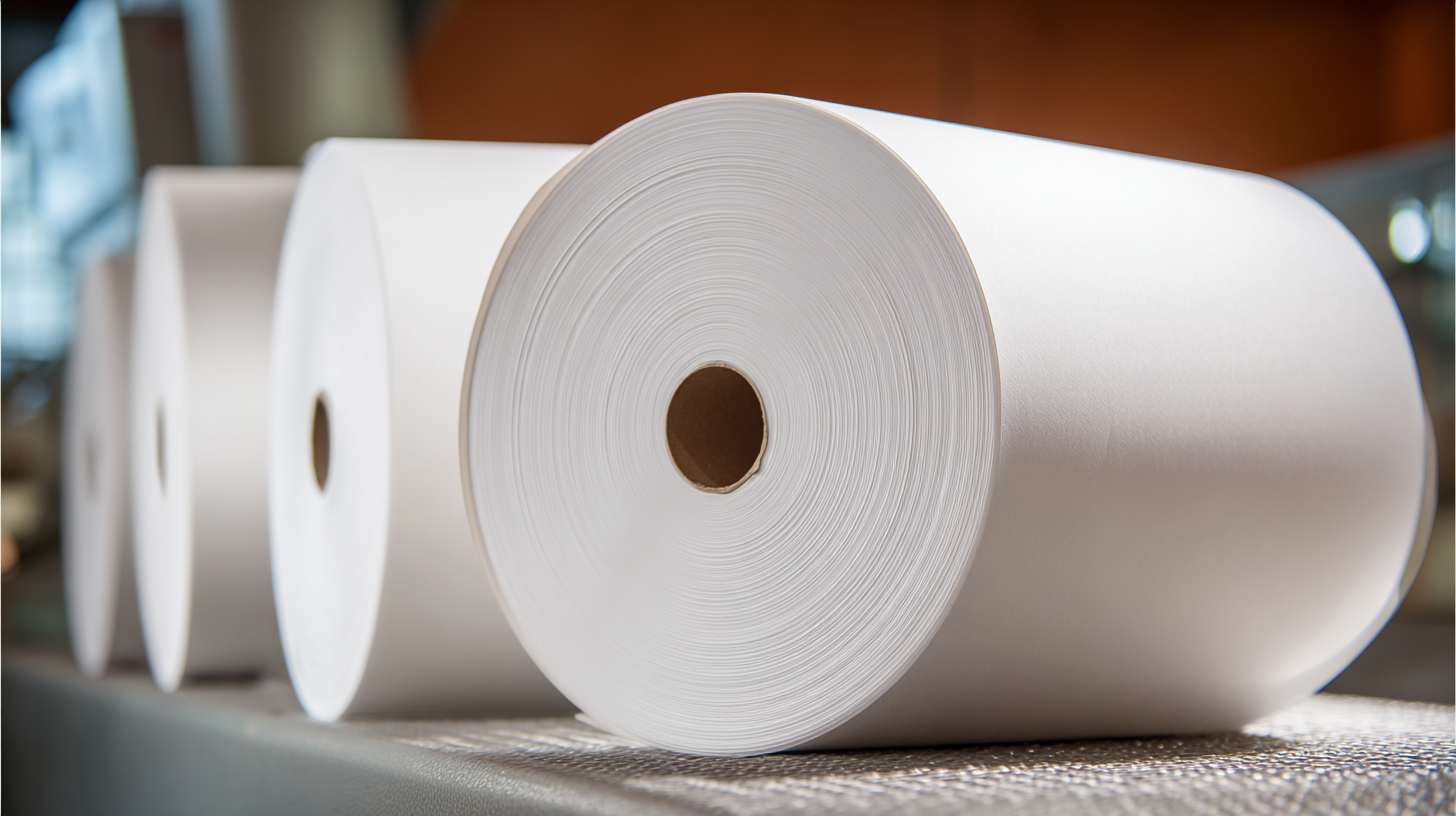In the dynamic landscape of the printing industry, sourcing the highest quality printing paper is crucial for businesses striving to maintain excellence in their products. Recent reports indicate that the global printing paper market is projected to reach approximately $2.5 billion by 2025, spurred by the increasing demand for packaging materials and high-quality printing solutions. As Chinese manufacturers leverage advanced technologies and sustainable practices, the quality of printing paper has seen significant upgrades, allowing them to remain competitive on an international scale. Emphasizing the importance of material selection, leading industry experts assert that the choice of printing paper can greatly affect the final output, influencing not just aesthetic appeal but also environmental sustainability. The quest for the best printing paper that balances quality and affordability has thus become a key strategy for businesses aiming to thrive in a global marketplace.

Choosing the right printing paper is crucial for achieving optimal results in your printed materials. Various types of printing paper are designed for specific purposes, each offering unique characteristics. For instance, coated papers, such as gloss and matte, are ideal for vibrant photographs and high-quality marketing materials due to their ability to enhance color and detail. According to the Paper and Paperboard Packaging Environmental Council, coated paper can improve print quality by up to 30% compared to uncoated paper, making it a popular choice for advertising.
When selecting paper, consider its weight and brightness. The weight, measured in grams per square meter (gsm), affects the durability and feel of the printed product. Standard office paper ranges from 70 to 100 gsm, while premium papers can exceed 300 gsm. Furthermore, brightness levels affect how colors appear on the page; a brighter paper will produce sharper and more vivid images. As per recent market reports, the demand for high brightness papers is expected to grow by 25% over the next five years, indicating its rising importance in printing quality.
**Tip:** Always request samples before making a bulk purchase. This allows you to evaluate text clarity and color reproduction effectively.
**Tip:** Make sure to match the paper type with your printing technology. For inkjet printers, using inkjet-compatible paper ensures better ink absorption and prevents smudging.
When selecting high-quality printing paper, several key factors must be considered to ensure optimal results. The global market for specialty paper is projected to reach 6.8 million tons in consumption by 2025 across North America and South America, indicating a growing demand for quality products in various commercial applications. As companies increasingly rely on printed materials for branding and operational needs, the choice of paper can significantly influence the overall effectiveness of their marketing and labeling strategies.
Another critical element is the type of paper chosen, such as thermal paper for labels, which has seen a rise in quality alongside technology advancements. The thermal paper market alone is poised to expand from $2.12 billion in 2020 to an expected $3.8 billion by 2032, signifying the importance of investing in high-quality materials that enhance clarity and durability. With clear and quality labels being essential for inventory tracking and customer transactions, businesses must pay attention to the specifications of the printing paper they utilize to ensure they select the best option for their needs.

When it comes to selecting the right paper for printing projects, understanding the differences between coated and uncoated paper is crucial. Coated paper, often treated with a layer of finish for a smooth surface, offers vibrant colors and crisp details, making it ideal for projects that require high-quality visuals, such as marketing materials and product packaging. Recent studies have shown that the performance of various inks, including vegetable- and mineral oil-based inks, can differ significantly between coated and uncoated surfaces, impacting print quality. The examination revealed that coated papers generally yield better printability, enhancing the sharpness and color accuracy of the final product.
On the other hand, uncoated paper has its unique advantages, particularly in terms of texture and feel. It is often favored for projects that prioritize a natural look, such as stationery or art prints. The latest industry reports indicate a growing trend in the use of uncoated papers, attributed to consumer preferences for sustainability and the tactile experience they provide. Despite a 5% decline in US printing-writing paper shipments recently, there remains a demand for high-quality uncoated options that utilize innovations such as bacterial cellulose, which enhances the physical properties and printing quality of fine papers. This evolution in the paper market reflects an increasing appreciation for both coated and uncoated variants, each serving distinct purposes in the printing landscape.
In today's world, the demand for sustainable practices in printing has never been greater. Eco-friendly printing paper options are not only better for the environment, but they also boost a business’s reputation. According to a report by the Environmental Paper Network, the production and disposal of traditional paper contribute significantly to deforestation and carbon emissions. Transitioning to recycled or sustainably sourced papers can dramatically reduce an organization’s ecological footprint. As consumers become increasingly eco-conscious, using sustainable materials can lead to higher customer loyalty and potentially, increased sales.
To choose the right eco-friendly printing paper, consider the following tips: First, look for papers certified by organizations like the Forest Stewardship Council (FSC), which guarantees that the paper comes from responsibly managed forests. Second, opt for papers made from 100% recycled content, which can save approximately 24% of energy and 50% of water compared to standard paper production. Lastly, assess the paper’s lifecycles, ensuring that it can be recycled after use—doing so can help minimize waste and promote a circular economy.
Adopting eco-friendly printing practices not only supports sustainability but can also enhance the quality of printed materials. Many manufacturers are now offering high-quality eco papers that perform well in printers and deliver crisp, vibrant prints while remaining conscientious towards the planet. Choose wisely to ensure that your printing endeavors reflect your commitment to environmental stewardship.

When it comes to achieving exceptional print quality, the choice of paper is paramount. Several brands stand out in the market for their commitment to producing premium printing paper that caters to both professional and personal needs. One of the top contenders is Mohawk, renowned for its environmentally friendly options and a wide variety of textures that enhance print aesthetics. Their papers are not only durable but also deliver vibrant colors and sharp details, making them ideal for high-end projects.
Another brand to consider is Neenah, which offers a vast selection of elegant papers perfect for everything from business cards to fine art prints. Their distinctive, luxurious finishes provide a touch of sophistication that is hard to resist.
Additionally, Epson is well-regarded for its inkjet papers that yield stunning photographic prints. Their focus on compatibility with printer technology ensures that users can achieve the best possible results, making their products a go-to choice for photographers and graphic designers alike. Investing in these top brands means investing in quality that leaves a lasting impression.
